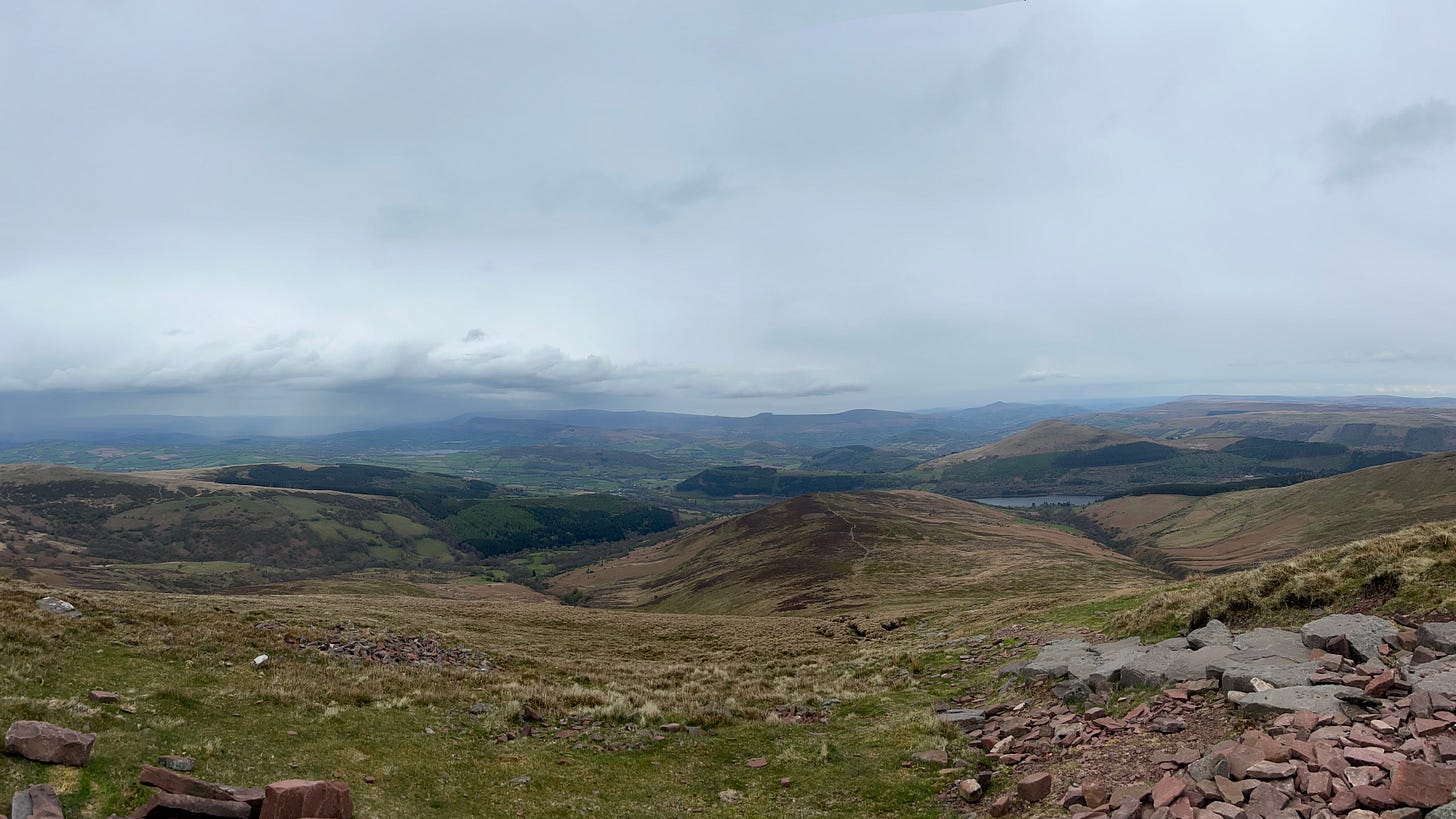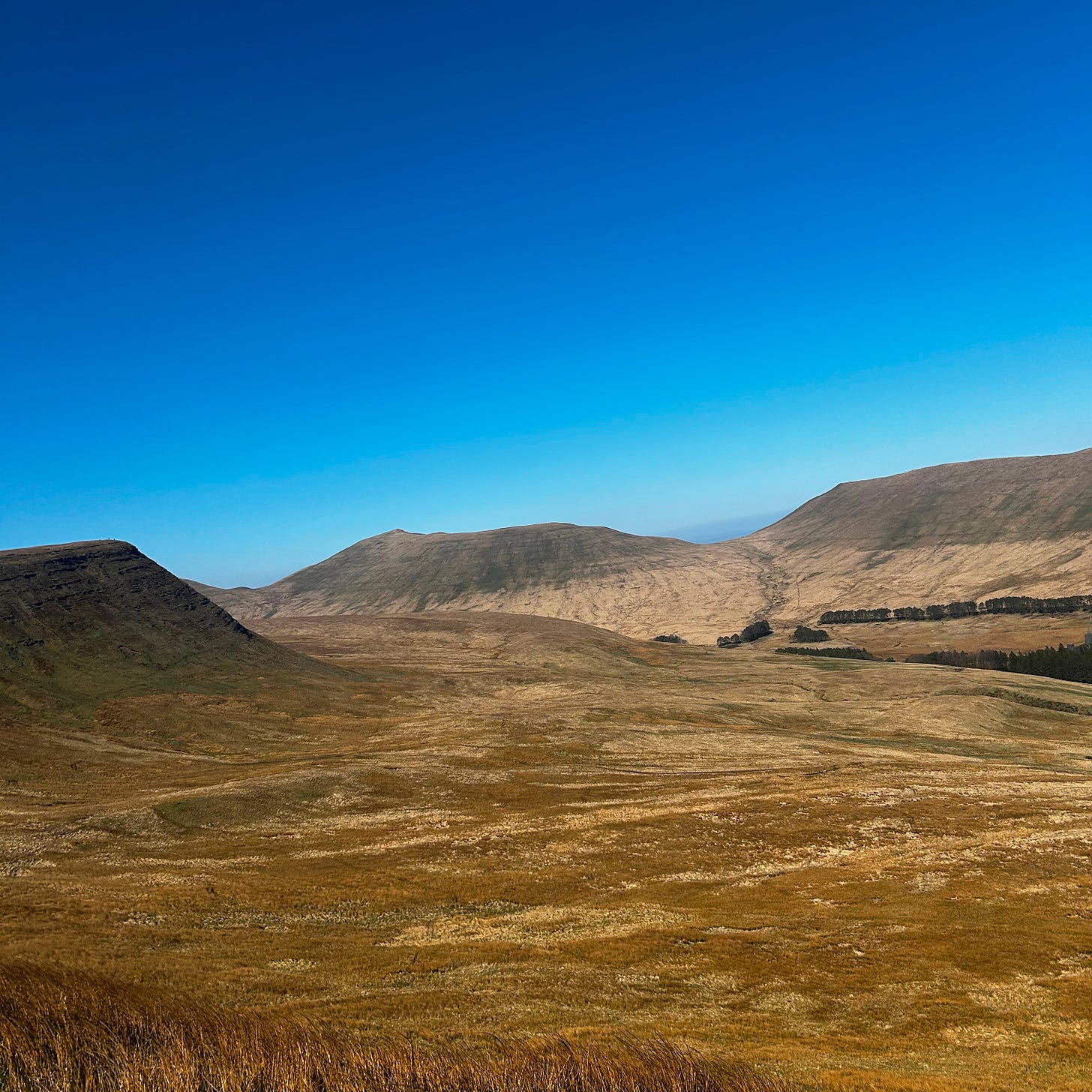Water pouring from the ceiling: Inside Wales' largest hospital
Plus an insight into what Keir Starmer thinks about Wales
Bore da,
Over the last week I have been in a bit of a book research vortex.
The great thing about this is that I get to spend time chatting to people who have got real insight into particular topics. Journalism is so often a surface look at something so it is great to be able to deep dive a bit.
As part of the research I have also been speaking to people (off the record) who have intimate experience within the UK and Welsh Governments. This is so helpful because it helps me calibrate my reporting and make sure I am not barking up any wrong trees (not that we are planting enough of them). I will be sharing some of these insights with you this week.
Before we start I want to put out a call for anyone reading who may wish to sponsor this publication. The newsletter gets over 50k views a month, has over 5k subscribers and many of Wales’ key decision makers subscribe. It is a great way to get your brand or product in front of these people (and support independent journalism). If you are interested you can see the sponsorship package here.
And now is a very fitting time to talk about Hello Starling who are great supporters of this newsletter:
This newsletter is sponsored by Hello Starling. A proudly Welsh company, Hello Starling plan and buy media, backed by data, which is designed to get maximum attention and measurable results. They specialise in getting eyes on your organisation, product and website. If you are looking to get a return on investment, a change in perception, more visitors, more subscriptions, a bigger audience or a happier audience, I highly recommend you check them out here. In doing so you help support this newsletter.
Atrocious pictures inside Wales hospitals - How can people be expected to work and recover in this?
The above image is from within Wales’ biggest hospital - University Hospital of Wales (UHW).
Let me explain what is happening here. The roof of UHW is a mess and routinely leaks in lots of places.
This water then comes through the ceiling.
In order to deal with this they have attached a plastic sheet to the ceiling to catch the water. A hose pipe is then stuck through the plastic with the water then running down into a bin which is housed inside a moveable metal cage. This is then flanked by two “wet floor” signs to keep everyone safe…
If you cast your eyes towards the back of the picture you can spot three more buckets catching different drips from the ceiling.
Now I don’t want you to be under the illusion that this is an isolated incident. Contraptions like this are all over the hospital after it rains. Take a look at these two pictures:
These are two buckets which are catching a leak next to a moveable hospital trolley in a corridor. Under them are some mouldy sponges which are presumably meant to be absorbing the water. As you can see there is damp coming through the walls as well.
Why this really matters
I don’t want to insult your intelligence by explaining why it is so bad to have this inside a hospital. These images are like something you would get on a cringy training video where you have to point out all the issues you can see.
But this is having a real impact on the hospital. From mid March till April 7 UHW introduced a “no visitors” policy because of a norovirus outbreak. There have been several other outbreaks as well. These are killing people and staff at the hospital have told me that it is inevitable that the physical environment within UHW is a contributing factor.
Official guidance from the UK Health Security Agency states that the ability to properly isolate patients and have separate washing facilities is key to preventing and minimising such outbreaks. One doctor told me that the lack of isolation and isolated washing facilities inside UHW was “crippling”.
A year ago I sat down for a briefing with senior figures within Cardiff and Vale Health Board. I asked them what was the single biggest change that would make a difference to their ability to deliver for people. I expected them to say more staff, but all of them came back and said “improvements to the hospital estate”.
The situation is even worse in the parts of the hospital which are staff only. One staff member told me that at one point a leak from the roof dripped into their mouth as they were walking. How the hell can you retain staff and keep them healthy when this is what they have to go to work in?
I am not for one second blaming those on the ground battling to keep the Welsh NHS going. It is precisely because those staff deserve so much better that I am highlighting this.
Wales’ largest hospital is a physical representation of the challenges in the wider health service. Literally falling apart at the seams with money being poured into plug leaks when the foundation needs replacing. The state of UHW, which is the 10th biggest hospital in the UK, is a national disgrace.
When I approached Cardiff and Vale Health Board a spokesman said:
“We are aware that the modernisation and maintenance issues are indicative of a national NHS ageing estate. Colleagues within our capital and estates team provide continuous maintenance and repair works to the hospital infrastructure, prioritising the health and safety of patients and colleagues. This is done in conjunction with and supported by Welsh Government estates and capital colleagues.
"Cardiff and Vale University Health Board continue to work proactively with Welsh Government on a number of business case developments which are intended to improve the site infrastructure."
Wales’ countryside is not for everyone
Since spring sprung about a month ago many of us will have been trying to get out and about exploring Cymru’s countryside.
In Wales we are very lucky in that we have A LOT of footpaths/public rights of way. We have approximately 23,000 miles compared to England’s 115,000 miles. This means that Wales has 20% the amount of England despite being only 17% the size.
Across the whole of Wales and England this network adds over 3,000 healthy years of life and has an estimated wellbeing value of £33 per person.
However, while Wales may seem very well endowed when it comes to footpaths for the public, these figures are a bit misleading. A report released just this year found that 50% of public right of ways in Wales were “blocked and/or not signed”. What is most annoying about this is that the report notes that this figure “represents no change from 2014-16”.
As you are probably sick of reading in this newsletter, the Welsh Government has talked a good game when it comes to fixing this, but it has all amounted to nothing.
The Welsh Government
Back in 2015, in response to the issues around access, the Welsh Government announced an ambition to undertake various reforms to improve people’s access to the countryside and to help modernise the way public access to the outdoors is managed. This was all about removing red tape and reducing lengthy processes. As they love to do, they held a consultation which you can see here.
As they simply can’t get enough of consultations they held a second one in 2017 and just for good measure they held an extensive stakeholder reference group programme and report in 2020.
However the brief for fixing this has been held by six different ministers over the past 11 years and they have made very little progress in actually improving the quality or extent of people’s access to the outdoors (but by jove those consultations were fun).
In fact, funding for rights of way improvement plans was actually removed in 2015/16 before groups like Ramblers Cymru successfully campaigned for its reinstatement in 2018/19.
Not that this really helps much. Some 25 Highway and National Park authorities now share just £2m between them annually which equates to an annual investment of just 64p per person in this national asset. Even better, this figure has remained unchanged for the past four years (you know, when there was rampant inflation).
The funding available for active travel walking and cycling, by comparison, was £218m over the five years to 2018/19 to 2023/24 which is more than 24 times the amount invested by the Welsh Government in recreational routes.
Even with this massive investment in active travel, they are still falling well short when it comes to actually looking at the impacts of their investment. Audit Wales’s recent active travel report concluded:
“Welsh Government remains a long way from achieving the step change in active travel intended through the Act. And approaches to monitoring and evaluation do not currently go far enough to enable robust tracking of progress or an overall assessment of value for money.”
So countryside access is being stymied by lack of funding whereas money is pouring into active travel but policy makers haven’t properly evaluate the progress.
But we can’t just blame the Welsh Gov for this…
Local government
You will be absolutely surprised to hear that, like everything, the resources in local authorities dedicated to managing and improving public access and paths have been in long term decline. Significant maintenance and legal backlogs have developed which will take decades to clear.
The increasing effects of extreme weather and increased use post-covid, are adding to wear and tear on the network.
Landowners
Landowners with a public path crossing their land have legal duties:
Not to obstruct the public use of the path
To maintain any structure on the path which are there for the benefit of land management (stiles, gates, etc)
To prevent obstruction from vegetation to the side of, or overhanging the path
But there is very little actual enforcement going on.
Farm payments in Wales have not historically been linked to compliance with long-standing legal duties for public access. Unlike in England, where council officials found it to be a useful tool, under the Common Agricultural Policy in Wales basic farm payments did not have the potential to be withheld if access responsibilities weren’t met.
Only under Welsh agri-environmental schemes were public payments to landowners able to be reduced or withheld if they were found to be obstructing public access. However this has not been widely used as an enforcement tool due to capacity in local authorities.
Without the option of enforcement linked to farm payments, the burden for resolving blockages and problems on farmland falls back on the public purse via highway authority budgets.
This means that essentially the public pay twice, once to the landowners, once to the highway authority and are STILL being prevented from using the paths.
Now don’t get me wrong, I do have sympathy for some farmers who have members of the public who walk across their land causing trouble and being unable to control their dogs. However the answer to this is increased education, not preventing access to paths they have a legal right to use.
Commenting on the lack of progress a Ramblers Cymru spokeswoman told me:
We are disappointed that so little progress has been made by government over the past decade to create better access for walkers. People deserve to be able to enjoy all of the wonderful paths Wales has to offer, but blocked routes and poor signage make it much harder for everyone to do so. We were appalled to see the latest, worsening figures (from the ERRAMP report) showing half of our cherished path network is blocked or not signposted.
We now have a unique opportunity to improve the Welsh path network through the Sustainable Farming Scheme. Landowners have a duty to maintain public paths, and this scheme could give hard-pressed local authorities the tools to ensure that all landowners maintain public paths on the land they manage.
Ramblers volunteers work to maintain and enhance paths across Wales, alongside local authorities, landowners and communities, but the government really needs to step up. A renewed vision, and fairer funding to improve the quality of public paths, can help Wales to become a healthier, wealthier and happier nation.
One of Wales’ biggest assets are our outdoor spaces. They drive both tourism and provide a huge range of benefits for people within Cymru. We need to make sure that they remain accessible for all of us to use.
When I approached the Welsh Government they said:
“We want more people to enjoy our countryside and take advantage of the many health and well-being benefits that getting outside can bring. That’s why we are continuing to fund the Access Improvement Grant, which will receive £4m during the next two years, to help councils and national park authorities improve public rights of way and other access opportunities.”
Why England’s relationship with itself matters to Wales

Keir Starmer clearly has no real interest in Wales or Scotland
I remember back in 2021, Keir Starmer wrote an essay where he laid out his vision for the UK and how he wanted us to get there. If you really want to read it you can here (though it is 34 pages and not exactly riveting).
What struck me most about it was that he barely mentioned the constituent parts of the UK at all. He only mentioned Wales once, and that was to boast about how well the NHS was doing… :
“A successful country depends on being a healthy country: the NHS matters to our health and it matters for our productivity. Inspired by the ambition of Wales and New Zealand, and the experiences of the pandemic that kept our minds and bodies healthy, Labour would put wellbeing at the heart of government decision-making.”
He only mentioned Scotland three times, and all of them were saying how bad the SNP were.
In recent weeks I have had several conversations with people within and around the UK Government as part of the research for my book. Recounting a conversation they had had, one of them said to me regarding Keir Starmer and devolution:
“The thing you have got to remember about Keir Starmer is that he's an English nationalist. He's not at all interested in Scotland or Wales because he knows nothing about them.
“So long as there is a Labour government in Cardiff and a Labour government in London, there will be no change to devolution, in fact perhaps there will be a retrenchment.”
As I write this Keir Starmer is saying that people in England need to “reclaim” the flag of St George after the riots in Southport. As someone who is English by birth, I couldn’t agree with him more but I feel that the need to reclaim Englishness well predates the awful scenes we saw.
I actually think it is near impossible to reclaim Englishness because I don’t believe anyone can really properly define what it means in the first place. Englishness is so conflated with Britishness in many people’s minds that it can be tricky to untangle them.
There is a strong argument that it is this inability for England to define what Englishness is that drives many of the divisions and perceived grievances within the UK as a whole.
Obviously this newsletter is about Wales not England but there are a few points I wanted to highlight about how England’s relationship with itself and how it is governed impacts Wales:
Keep reading with a 7-day free trial
Subscribe to The Will Hayward Newsletter to keep reading this post and get 7 days of free access to the full post archives.








